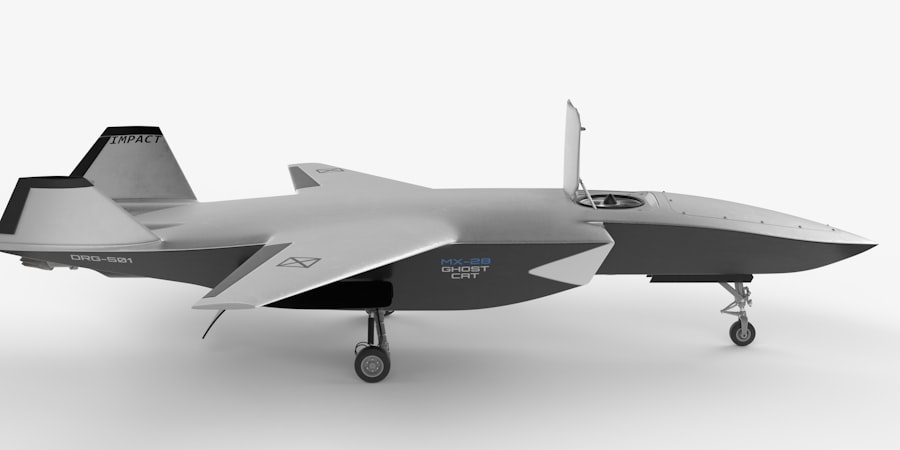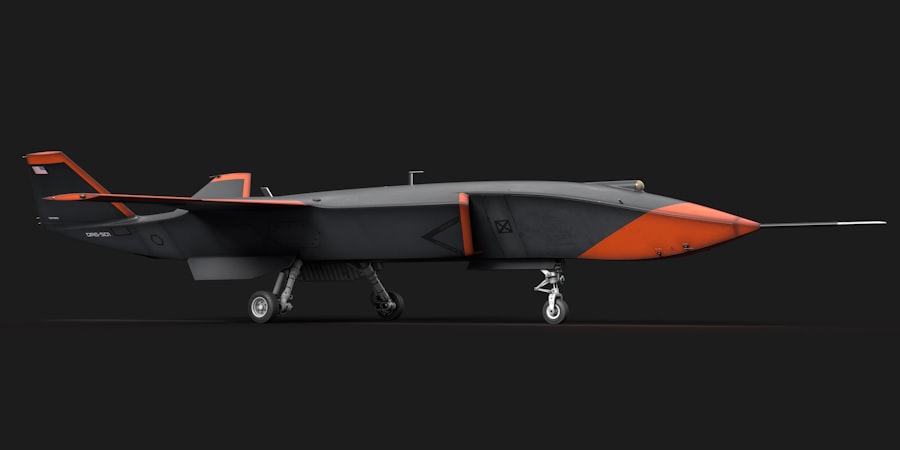The advent of autonomous nuclear drones marks a significant milestone in the intersection of military technology and artificial intelligence. These unmanned aerial vehicles, equipped with nuclear capabilities, represent a new frontier in warfare and defense strategies. As nations grapple with the implications of such technology, the potential for both enhanced security and catastrophic consequences looms large.
The integration of nuclear capabilities into autonomous drones raises critical questions about their operational use, ethical considerations, and the broader impact on global stability. As the world witnesses rapid advancements in drone technology, the emergence of autonomous nuclear drones is not merely a technical evolution but a paradigm shift in military strategy. These drones promise to operate independently, making real-time decisions based on complex algorithms and vast data inputs.
This capability could redefine how nations approach deterrence and conflict, potentially altering the balance of power on a global scale. However, the implications of deploying such technology are profound, necessitating a thorough examination of its benefits, risks, and ethical dilemmas.
Key Takeaways
- Autonomous nuclear drones have the potential to revolutionize military technology and international relations.
- The evolution of drone technology has paved the way for the development of autonomous nuclear drones.
- Artificial intelligence plays a crucial role in enabling autonomous nuclear drones to make independent decisions.
- The potential benefits of autonomous nuclear drones include increased precision, reduced human risk, and enhanced strategic capabilities.
- The risks and concerns surrounding autonomous nuclear drones include the potential for misuse, accidental escalation, and ethical implications.
The Evolution of Drone Technology
Drone technology has evolved dramatically since its inception, transitioning from rudimentary remote-controlled devices to sophisticated autonomous systems capable of executing complex missions. Initially developed for reconnaissance and surveillance purposes, drones have expanded their roles to include combat operations, logistics support, and even humanitarian assistance. The integration of advanced sensors, improved battery life, and enhanced communication systems has significantly increased their operational capabilities.
The evolution of drone technology can be traced back to military applications during the early 20th century, but it gained significant momentum in the late 20th and early 21st centuries. The introduction of unmanned aerial vehicles (UAVs) like the Predator and Reaper drones revolutionized modern warfare by allowing for precision strikes without risking pilot lives. As technology progressed, the focus shifted towards autonomy, enabling drones to perform missions with minimal human intervention.
This trajectory has paved the way for the development of autonomous nuclear drones, which could operate independently in high-stakes environments.
The Role of Artificial Intelligence in Autonomous Drones

Artificial intelligence (AI) plays a pivotal role in the functionality of autonomous drones, enabling them to process vast amounts of data and make decisions in real-time. Through machine learning algorithms and advanced data analytics, these drones can identify targets, assess threats, and execute missions with remarkable precision. The integration of AI not only enhances operational efficiency but also allows for adaptive responses to dynamic battlefield conditions.
Moreover, AI empowers autonomous nuclear drones to learn from past experiences and improve their decision-making processes over time. This capability raises both opportunities and challenges; while AI can enhance mission success rates and reduce human error, it also introduces uncertainties regarding accountability and control. The reliance on AI for critical military operations necessitates rigorous oversight and ethical considerations to ensure that these systems operate within acceptable parameters.
The Potential Benefits of Autonomous Nuclear Drones
| Benefits | Details |
|---|---|
| Increased Safety | Reduced risk to human operators during nuclear operations |
| Cost Efficiency | Lower operational costs compared to manned missions |
| Precision and Accuracy | Ability to execute tasks with high precision and accuracy |
| Reduced Human Error | Minimized potential for human error in critical operations |
| 24/7 Operations | Capability to operate continuously without human fatigue |
The potential benefits of autonomous nuclear drones are multifaceted, offering strategic advantages that could reshape military operations. One significant advantage is the ability to conduct missions in high-risk environments without endangering human lives. By deploying autonomous drones equipped with nuclear capabilities, nations can deter adversaries while minimizing the risk to their personnel.
This aspect could lead to a more calculated approach to conflict resolution, where nations can project power without direct engagement. Additionally, autonomous nuclear drones could enhance surveillance and reconnaissance capabilities, providing real-time intelligence that informs strategic decision-making. Their ability to operate in contested airspace or hostile territories without risking human pilots allows for greater flexibility in military operations.
Furthermore, these drones could serve as a deterrent against potential aggressors, signaling a nation’s readiness to respond decisively to threats while maintaining a degree of plausible deniability.
The Risks and Concerns Surrounding Autonomous Nuclear Drones
Despite their potential benefits, autonomous nuclear drones also pose significant risks and concerns that cannot be overlooked. One primary concern is the possibility of accidental launches or miscalculations due to software malfunctions or unforeseen circumstances. The stakes are incredibly high when nuclear capabilities are involved; even a minor error could lead to catastrophic consequences on a global scale.
Moreover, the proliferation of autonomous nuclear drones raises questions about arms races and escalation dynamics among nations. As countries develop their own versions of these technologies, the risk of misunderstandings or misinterpretations increases. The potential for autonomous drones to operate independently without human oversight could lead to scenarios where decisions are made based on flawed data or algorithms, further complicating international security dynamics.
The Impact on International Relations and Security

The introduction of autonomous nuclear drones is poised to have profound implications for international relations and security frameworks. As nations invest in this technology, the balance of power may shift dramatically, leading to new alliances and rivalries. Countries that possess advanced autonomous drone capabilities may find themselves in a position of strategic advantage, prompting others to accelerate their own military advancements.
Furthermore, the existence of autonomous nuclear drones could alter deterrence strategies among nations. Traditional notions of deterrence rely on the threat of retaliation; however, with autonomous systems capable of independent action, the calculus becomes more complex. Nations may need to reconsider their defense postures and diplomatic strategies in light of this evolving landscape, potentially leading to increased tensions or even conflict.
The Ethical and Moral Implications of Autonomous Nuclear Drones
The ethical and moral implications surrounding autonomous nuclear drones are profound and multifaceted. One major concern is the delegation of life-and-death decisions to machines that lack human judgment and empathy. The prospect of an algorithm determining when to deploy nuclear weapons raises significant moral questions about accountability and responsibility.
Who is liable if an autonomous drone makes a catastrophic error? These questions challenge existing frameworks for ethical warfare and necessitate a reevaluation of how military operations are conducted. Additionally, the potential for dehumanization in warfare is a pressing concern.
As technology increasingly mediates conflict, there is a risk that decision-makers may become desensitized to the consequences of their actions. The use of autonomous nuclear drones could lead to a detachment from the human cost of warfare, making it easier for nations to engage in aggressive actions without fully considering the ramifications.
The Legal and Regulatory Challenges of Autonomous Nuclear Drones
The legal and regulatory challenges associated with autonomous nuclear drones are complex and multifaceted. Existing international laws governing armed conflict may not adequately address the unique challenges posed by these technologies. For instance, questions arise regarding compliance with international humanitarian law when decisions are made by machines rather than humans.
The lack of clear legal frameworks could lead to ambiguities in accountability and responsibility for actions taken by autonomous systems. Moreover, regulating the development and deployment of autonomous nuclear drones presents significant challenges for policymakers. As nations race to advance their military capabilities, establishing international norms and agreements becomes increasingly difficult.
The potential for an arms race in autonomous drone technology necessitates collaborative efforts among nations to create binding regulations that govern their use while ensuring global security.
The Development and Deployment of Autonomous Nuclear Drones
The development and deployment of autonomous nuclear drones involve intricate technological advancements coupled with strategic military considerations. Nations investing in this technology must navigate a landscape characterized by rapid innovation while ensuring that their systems are secure from cyber threats and external interference.
Furthermore, the deployment of autonomous nuclear drones requires careful consideration of operational protocols and command structures. Military leaders must establish clear guidelines for when and how these drones can be utilized while ensuring that human oversight remains integral to decision-making processes. Balancing autonomy with accountability will be crucial in maintaining control over these advanced systems.
The Future of Autonomous Nuclear Drones
The future of autonomous nuclear drones is likely to be shaped by ongoing technological advancements as well as evolving geopolitical dynamics. As nations continue to invest in artificial intelligence and drone technology, the capabilities of these systems will expand significantly. This evolution may lead to more sophisticated decision-making algorithms that enhance operational effectiveness while also raising new ethical dilemmas.
Moreover, international cooperation will play a critical role in shaping the future landscape of autonomous nuclear drones. Collaborative efforts among nations can help establish norms and regulations that govern their use while promoting transparency and accountability. As the world grapples with the implications of this technology, fostering dialogue among stakeholders will be essential in navigating the challenges ahead.
The Need for Responsible Use and Regulation of Autonomous Nuclear Drones
In conclusion, the emergence of autonomous nuclear drones presents both unprecedented opportunities and formidable challenges for global security. As nations explore the potential benefits of this technology, it is imperative that they also confront the associated risks and ethical dilemmas head-on. Responsible use and regulation will be crucial in ensuring that these powerful systems do not exacerbate existing tensions or lead to unintended consequences.
The path forward requires collaboration among nations to establish clear legal frameworks that govern the development and deployment of autonomous nuclear drones. By prioritizing transparency, accountability, and ethical considerations, the international community can work towards harnessing the potential benefits while mitigating the risks associated with this transformative technology. Ultimately, the responsible management of autonomous nuclear drones will be essential in shaping a safer future for all nations.
For a deeper understanding of the implications and potential applications of these technologies, you can read more in the article available at




